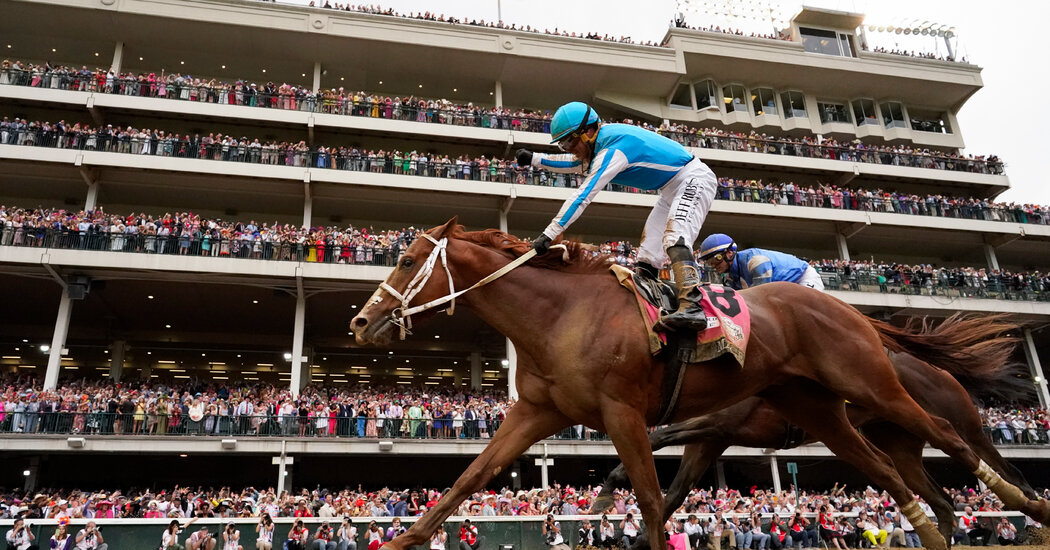With the P.G.A. Championship’s Move to Spring, a Club Scrambled to Get Ready
Chilly raindrops were falling early this May when Jeff Corcoran walked Oak Hill Country Club’s East Course in Pittsford, N.Y., near Rochester. Corcoran, Oak Hill’s manager of golf courses and grounds for about the last 20 years, was cautiously confident in its lustrous condition.
An unusually warm Western New York winter — only 50 inches of snow fell in the Rochester area instead of what is usually around 100 — was fortuitous for Oak Hill. The course preparations were ahead of schedule to host the 105th P.G.A. Championship, which runs from Thursday to Sunday.
Once called “Glory’s Last Shot,” the championship, held in August, went from afterthought, as the fourth and final major of the year, to the second spot when golf moved the tournament to May in 2019.
The move was prompted after golf returned to the Olympics in 2016 in Rio de Janeiro, creating a conflict with the P.G.A. Championship. That forced the P.G.A. of America to move the tournament to July. Officials didn’t want to have to adjust the schedule every four years for the Olympics, so they decided on a permanent date in May.
There were other advantages for the sport, too. By moving the P.G.A. Championship to May, the FedEx Cup Playoffs could end in August to avoid competing against the juggernaut of the N.F.L.
The P.G.A. Championship’s move didn’t seem like much of a gamble when the other host sites were in the South. But this year’s northern venue — its signature oak trees have not quite bloomed in full — calls attention to the calendar switch. The extreme preparations Oak Hill and the P.G.A. of America, which oversees the event, took to mitigate the area’s notoriously harsh winters and late springs offer a master class in course management.
Whether the weather cooperates is out of their control.
“Mother Nature rules all,” Corcoran said. “She’s undefeated. If she decides there’s going to be five inches of snow, there will be five inches of snow. Or she could decide it’s going to be 70.”
This will be the earliest of any of the 13 major men’s golf events held at Oak Hill, including three previous P.G.A. Championships. The club was picked to host the 2023 event eight years ago and learned of the impending May move in 2017. They found a way to make the date work.
Golf officials still agree that despite the weather worries, moving to second place in the season has improved the event’s visibility coming after the most-watched golf tournament in the world, the Masters. It also eliminated what had been a two-month gap from the Masters to the United States Open.
“It gave a nice progression to have a major event every month,” said Kerry Haigh, chief championships officer of the P.G.A. of America.
Consider that playing in the beach days of August prompted officials to invent catchy marketing slogans to make “a problem seem like an opportunity,” Seth Waugh, the chief executive of the P.G.A. of America, said in an interview.
“I think we have a better audience,” he said. “I think we have a better story to tell. And I think we’re more front and center.”
He can thank the behind-the-scenes work for that. For the major championships, golf organizers usually erect infrastructure at local clubs — stands and corporate tents — three months in advance. In Pittsford, a suburb about eight miles southeast of Rochester, however, the ground is usually frozen in February.
According to Bryan Karns, the championship director for the 2023 P.G.A. at Oak Hill, the crews put beams into the ground by November, building the floors and steel walls of the tents six feet high to withstand the worst snowfall.
The course closed to members in October. By then, Corcoran had directed the necessary agronomy practices, including aerification, treating the greens with a sand mixture and putting down chemical applications for snowmold.
Memories of previously chilly May tournaments at Oak Hill contribute to the anxiety. The Senior P.G.A. Championships there in 2008 and 2019 — held a few days later in May — were marked by rain and gusty winds, which made the thick rough even more snarling. In 2008, there were frost delays in the practice rounds and sleet in the first round, sending some of the seniors packing. Jay Haas won with 7-over-par; there were just a total of 12 rounds of under-par golf that week.
“It was definitely a cold week; the weather was challenging, and the scores sort of reflected it,” Haigh said.
A lot has changed at Oak Hill since then. Immediately after the Senior P.G.A. Championship in 2019, the course underwent a redesign by the architect Andrew Green. Corcoran called it a “sympathetic restoration” to the original 1926 Donald Ross design.
Green removed hundreds of overhanging oak trees, making more shots available for golfers to play from the rough, and improving the sightlines for spectators. Now the club’s giant American flag on the right side of the 13th green will be visible from most of the front nine.
Green redesigned three holes that didn’t seem to fit the Ross mold. He removed one altogether — the par-3 sixth that was the scene of four holes in one in the second round of the 1989 U.S. Open. That’s now a par 4, combined with the former fifth hole. Green built a new par-3 fifth. By restoring the greens to their original size, Oak Hill has been able to increase and add hole locations, giving professionals a new golf course.
“Our aim is that it’s tough and challenging and fair,” Haigh said. “It puts a premium on driving and hitting the fairway.”
Those fairways will be sparkling, even if the trees lining them might not be as lush. “I’m not in control of that,” Corcoran said. “But they don’t play the major championship from the tops of trees, do they?”


